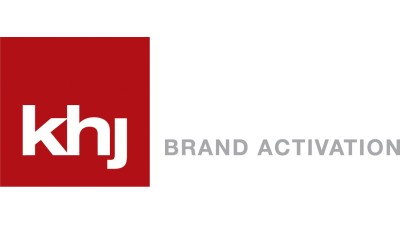To Add Value To Your Property, Consider Branding

Michael Panagako looks at real estate marketing and advertising every day. He sees developers pitching their buildings with slick renderings and repetitive phrases like “best-in-class amenities” or “spectacular views.” But in the midst of a national building boom, large-scale developments are struggling to fill their properties with the tenants they are looking for. Many have to offer costly move-in packages, such as free rent or cash-back offers, just to fill their space.
Panagako proposes a different approach.
A vice president and senior strategist at KHJ Brand Activation, Panagako has found that developers are most successful when they establish a distinct brand identity for their properties, and bring that identity to life through environment and experience. Effective branding adds value to properties and increases return on investment.
“Marketing is an expense, but branding is an asset,” Panagako said. “It’s one of the most critical, and yet overlooked, tools that developers can use to create value.”
Panagako would know, having spent nearly a decade working for a leading commercial real estate developer and the past 13 years developing brands on behalf of real estate developers throughout the country.
“Having lived in that world, I understand the sensitivities that are unique to real estate,” he said. “But having worked in advertising and branding for longer, I also know how to shake developers out of their comfort zone and create brands that are memorable.”
Throughout his career, Panagako has worked with all types of real estate developments, with a specialty in mixed-use neighborhood and destination developments over $1B.
A Competitive Edge
To develop a brand that stands out, developers need to be more than just creative for the sake of creativity, Panagako said. The brand needs to stand for something that people covet and that competitors can’t offer.
“There’s a waterfront condo development in Boston that markets itself as having ‘waterfront views and world-class amenities, all in Boston’s hottest neighborhood,’” Panagako said. “What that developer has just done is described all of their competitors. There’s no brand there, just marketing noise. Effective outreach strategies create pitches that no competitor could ever use.”

When Panagako and his creative team were asked to rebrand the former Boston Globe HQ, they wanted to give it a name that was a nod to its journalistic past while acknowledging its future use as a tech-centric office space. KHJ landed on “The Beat."
The Beat pays homage to the reporters who once provided in-depth beat reporting on national and global issues for the Boston Globe. But the name also has another meaning. To be on the beat is to be on the cutting edge of progress, setting the stage for the type of tech-savvy, innovative space the property hopes to become.
KHJ took a similar approach when the team rebranded five Class-B buildings as a unified office community. Panagako and his team turned to nature for inspiration, and The Hive was born. The branding connotes a feeling of connectivity, bringing the property to life through the idea of a hive, where tenants can join an innovative community and exchange ideas.
KHJ teamed up with the Bergmeyer architecture team to integrate the Hive's honeycomb motif into every aspect of the site, including the interior decor and exterior signage. Communal spaces inside the buildings, like spacious kitchens and gathering spaces, embody the Hive.

Doing The Research
Developing a property brand is more than a creative exercise, it is also a scientific one that begins with market research. This may entail a mix of qualitative research like interviews and focus groups, and quantitative research, such as surveys and demographic reporting.
“If you don’t start with research, you’re basically just doing an elementary design exercise,” Panagako said.
For example, when the former John Hancock Tower was repositioned, research showed that tenants were happy with the gated and private environment that their office gave them, as opposed to the busy and crowded Prudential Center shopping mall and office tower nearby. Despite the growing trend toward more mixed-use development, market research showed these specific tenants were satisfied with a quieter, closed-off community.

Targeting the Right Tenants
Once a development team conducts market research, it can determine the most effective strategy to reach potential residents or tenants.
For office properties, the target market is potential anchor tenants, and that may limit a building to five to 10 companies in the field. With a target audience that small, Panagako does not recommend mass-produced marketing materials and instead suggests creating outreach campaigns directed at each individual firm or company.
For developers who want to create value for their assets, branding is one of the fastest and most cost-effective ways to reach their goals, Panagako said. Through effective branding, a building becomes a destination.
This feature was produced in collaboration between Bisnow Branded Content and KHJ Brand Activation. Bisnow news staff was not involved in the production of this content.

